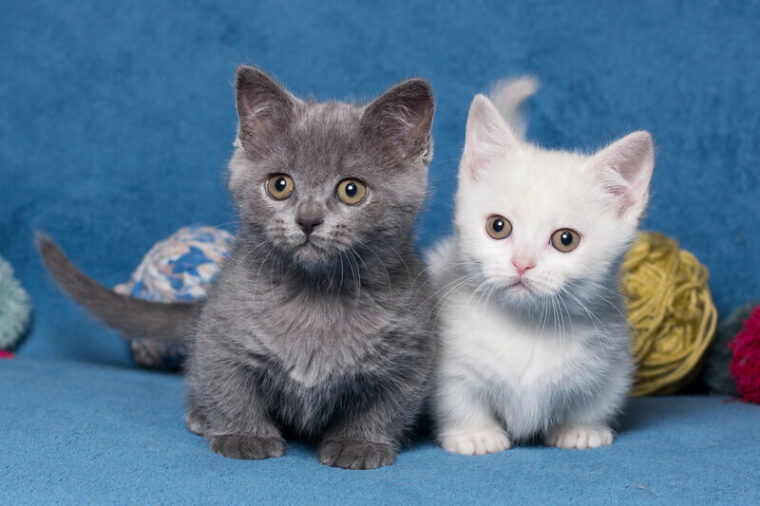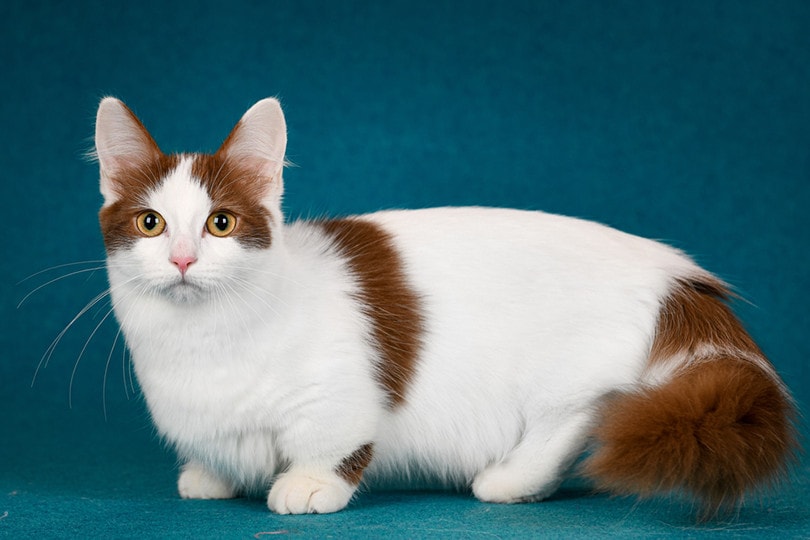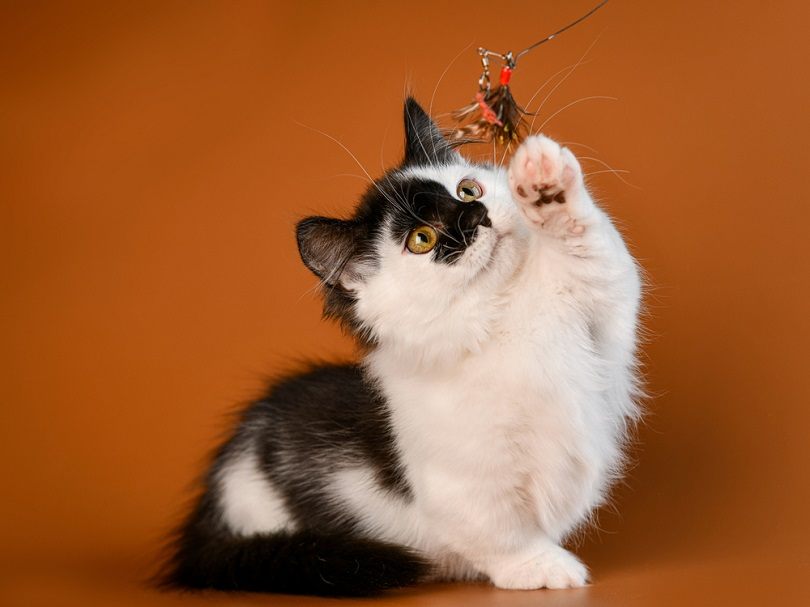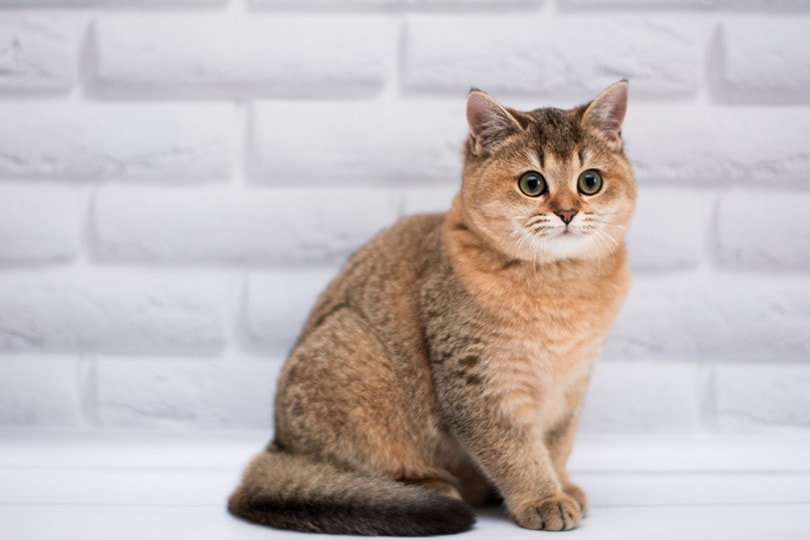
There is much controversy surrounding the Munchkin cat breed. So much so that the only organization to officially recognize the breed is The International Cat Association. Munchkins occur naturally through a genetic mutation that results in extremely short limbs. Though a more recent breed, they are undoubtedly one of the most recognizable cat breeds.
Some believe that selectively breeding this genetic mutation is unethical due to the potential health concerns they can face. This mutation offers no benefit to the cats but only a sought-after aesthetic enjoyed by humans. Others argue that the Munchkin is an overall healthy breed, and they do have normal lifespans. Since they are relatively new, there is a lot more to be learned about the breed. Regardless, it’s good to know what kind of potential health concerns these precious little cats may face.
The 9 Most Common Munchkin Cat Health Problems
1. Osteoarthritis
Osteoarthritis, or OA, is a chronic degenerative disorder that occurs when the cartilage that cushions the ends of bones gradually deteriorates over time. This condition can develop due to normal wear and tear over a lifetime or can be the result of a primary problem with the joint itself.
Osteoarthritis in cats typically occurs in the hip, knees, ankles, and elbows. Just like in humans, this condition is most common in older cats. It is believed that Munchkins are predisposed to osteoarthritis and can suffer from a more severe form of the condition due to their extremely short limbs. Diagnosis is done via diagnostic imaging, and treatment will be at the discretion of the veterinarian.

2. Pectus Excavatum
Pectus excavatum is the deformity of the sternum and connecting cartilages. This results in a horizontal narrowing of the chest, mostly on the posterior side. This condition can be the result of a genetic predisposition but can also occur spontaneously in any cat.
Less severe cases of pectus excavatum may not be apparent until several weeks after birth, though severe cases are typically identified at birth. A veterinarian will need to properly diagnose the condition. The prognosis is not great for those suffering from a severe form of the condition, and surgery is the only current treatment.
Some individuals with milder cases may benefit from non-surgical options, but this would need to be discussed and done under the supervision of the veterinarian.
3. Spinal Deformity
Munchkin cats may be at an increased risk for spinal deformity due to the genetic mutation that results in the unique features of the breed. More specifically, they seem to have an increased incidence of lordosis, which is an excessive curvature of the spine. This condition can give the cat a swayback appearance and can result in pain, discomfort, and mobility issues.
Deformity of the spine and vertebral malformations are typically inherited conditions that can be observed at birth or become more obvious as the cat grows.

4. Hyperthyroidism
Hyperthyroidism is an endocrine disease that is most common in middle-aged or senior cats. Though the disease is not specific to the Munchkin breed, any cat is at risk of developing hyperthyroidism. Increased production of thyroid hormones is what causes this disease. These hormones are very important in overall bodily function, which is why they can lead to secondary health conditions.
To confirm a hyperthyroidism diagnosis, testing must be completed by a veterinarian, and treatment typically consists of medication and dietary changes but can also include radioactive iodine therapy and even surgery. The prognosis of hyperthyroidism is typically good with proper treatment, though secondary conditions that arise as a result can be concerning and must be handled accordingly.
5. Feline Lower Urinary Tract Disease (FLUTD)
Feline lower urinary tract disease, or FLUTD, is an all-encompassing term that covers a variety of disorders that affect the urinary system. Ranging from mild to severe, it can be caused by a variety of issues such as inflammation, infection, urinary obstruction, diet, and behavioral issues.
Many cats are presented to the veterinarian each year with symptoms related to FLUTD. The prognosis for feline lower urinary tract disease is highly dependent on the specific issue the individual cat is facing. Regardless of severity, veterinary intervention is necessary for the treatment of any condition related to feline urinary tract disease.

6. Heart Disease
Heart disease can affect any breed of cat and affects as many as every 1 in 10 cats worldwide, according to the AVMA. Heart disease is a serious condition in which an abnormality in the heart is present. It is potentially life-threatening and must be monitored closely and treated by a veterinary professional. There are two different categories of heart disease.
Congenital
When heart disease is considered congenital, it begins during fetal development and is present at birth. It is the result of inherited disorders that could be passed down to multiple members of the litter, or it could be a condition that only affects one kitten.
Acquired
Acquired heart disease is the onset of heart disease, typically in older cats, as the result of structural damage. Acquired heart disease can be the result of a hereditary health condition that developed later in life, or it could be due to other causes like dietary or environmental factors. Hypertrophic cardiomyopathy is the most common type of heart disease seen in cats. This is not a Munchkin-specific health concern but a concern for all pet cats.
7. Diabetes
With diabetes, blood sugar cannot be effectively regulated by the body. This is another endocrine disease that is much more common in adults and seniors but also more common in males than in females. Diabetes can result from obesity and is on the rise among domesticated pets due to their overall diet.
Diabetes has the potential to reduce the quality of life and shorten a cat’s lifespan. The disease can be broken down into two types, both of which must be managed by a veterinarian.
Type I
With type 1 diabetes, the cat is fully dependent on insulin, meaning its body can no longer produce or release enough insulin into the body. Though type 1 does occur, type II is typically much more common in cats.
Type II
With type II diabetes, the cat’s body can produce insulin, but the organs and other tissues have developed a resistance to the insulin and do not respond correctly. This type of diabetes is common in overweight and older cats that have diets high in carbohydrates.

8. Chronic Kidney Disease (CKD)
Chronic kidney disease, also referred to as CKD, is a health condition that is caused by some form of damage to the kidneys. CKD is much more common in older cats, as the kidneys tend to show damage over their lifetime. Because the kidney’s function is to remove waste from the bloodstream, the condition can be life-threatening.
There is no cure for CKD, but there are treatment options that can help maintain longevity and overall quality of life. Prognosis is dependent on the individual cat and how well they respond to treatment options. To diagnose chronic kidney disease, a veterinarian will need to do proper testing through urinalysis and blood tests.
9. Dental Disease
One of the most common health conditions that plague cats is dental disease. Dental disease can affect both the teeth and gums, and it has been proven that between 50 and 90 percent of cats four years of age or older will suffer from some form of dental disease. Dental issues are much more common in older cats but are very preventable with proper oral hygiene.
Cats tend to suffer most from gingivitis, periodontitis, and tooth resorption. These conditions can cause a lot of pain and discomfort. If left untreated, dental disease can cause issues with chewing, swallowing, and eating. Since all cats are at risk for dental disease, it’s best to keep in touch with a veterinarian for preventative measures and treatment if the signs are already present.
Conclusion
The fun-loving little Munchkin cat breed may be predisposed to some health conditions such as spinal deformity, pectus excavatum, and osteoarthrosis due to a genetic mutation that causes their distinct short limbs. This controversial breed is also susceptible to some conditions that are common among all domestic cats. There is still a lot to learn about these little kitties, but as an owner or potential owner, it’s good to know what you may be in for.
See also:
- How Big Will My Munchkin Cat Get? Size + Growth Chart
- Munchkin Cat Lifespan: Average and Max Life Expectancy
Featured Image Credit: Sviatoslav_Shevchenko, Shutterstock







